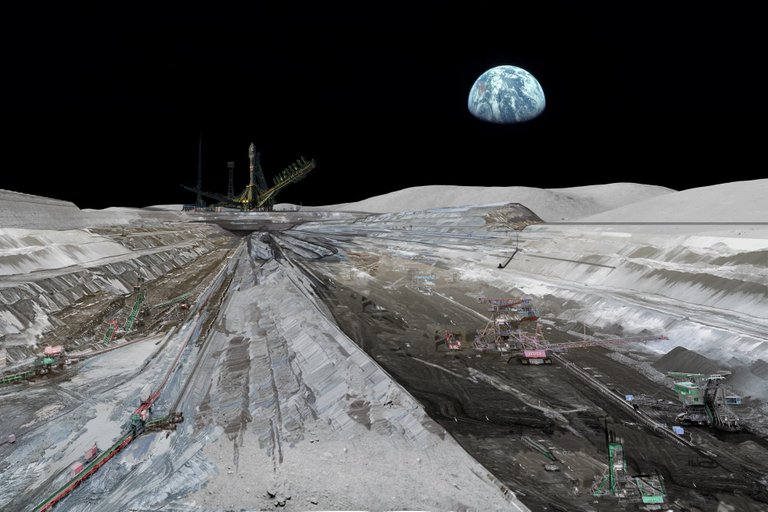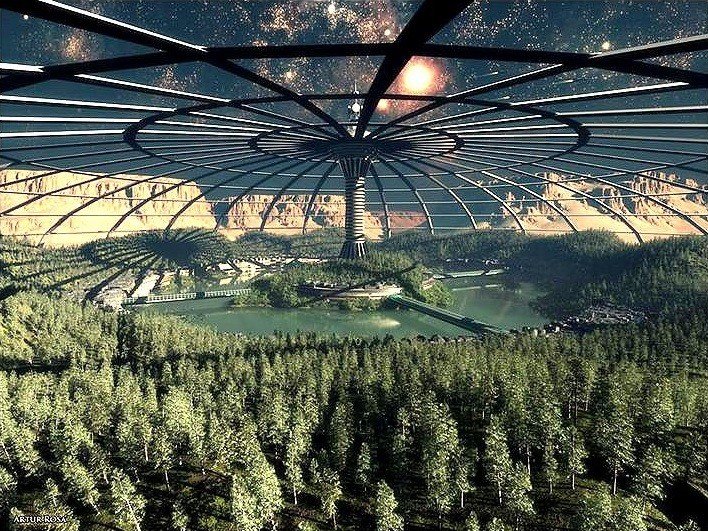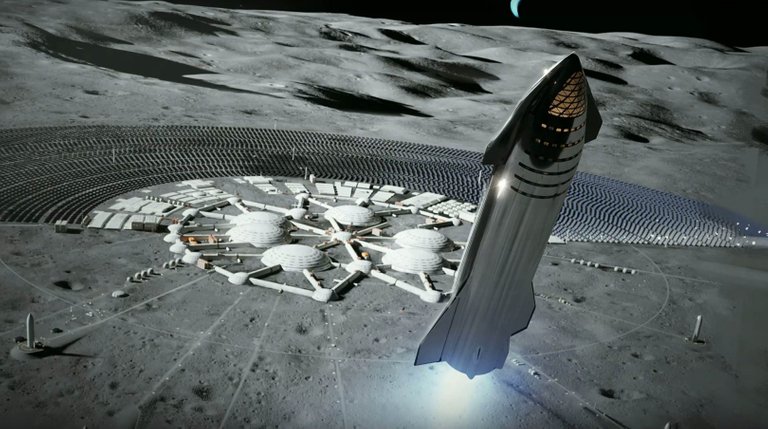The Importance of Industrializing the Moon
There’s an idiom that goes “It’s expensive to be poor”. The illustration usually given is that a cheap pair of boots that will last for six months costs $20, while an expensive pair of boots that will last a decade costs $100. If you simply can’t afford the upfront cost of the second pair, you’ll buy the first, because that is what your meager but consistent rate of pay allows.
There’s a related idiom that goes “it takes money to make money”. Want to mine for gold? You’ll need a pick. If you spend a little more, you can afford a drill, which not only is easier on your body but greatly improves the rate of gold extraction. Spend a little more and you can rent an excavator, so on up to a full blown mining operation. Can’t afford any of these? You dig with your hands, bloodying them in the attempt, extracting gold at a pitifully slow rate.
These principles apply to many areas of life, but none more topically than manned spaceflight. In that field we’re still basically at the “dig with your hands” stage. Absolutely every manned mission into space is exorbitantly expensive because all of them depart from within Earth’s gravity well.
The ISS, though it is to some degree a boondoggle due to the near useless orbit we had to put it into so Russians could reach it, has nevertheless taught us a great deal about how to build long lasting habitats off Earth and saved us from having to launch a shuttle for every experiment we want to do on-orbit. Likewise experimental gardening and 3D printing aboard the ISS represent baby steps towards self-sufficiency that can reduce but not eliminate the need for resupply from Earth.
We’ll need to do much better than that if we’re going to venture any further than low Earth orbit, the mother’s basement of space. We absolutely cannot colonize the Moon or Mars with modules sent by rocket, one at a time, from within Earth’s gravity well. The reason is simple: Even if we were building a city on Earth, if we had to send all of it by rocket, one room at a time, it would rapidly bankrupt us.
Likewise, that isn’t how speculative mega habitats like O’Neill cylinders were ever intended to be built. If we had to send up all of the components for even a single O’Neill cylinder by rocket, from Earth, we wouldn’t get very far into construction before it bankrupted us. Even a united Earth government could not fund such a project except amortized over many centuries.
Fortunately there’s a better way, and it isn’t terribly complicated. You don’t send materials from Earth into space to support construction of projects in space. You instead get those materials from space to begin with. Ideally from the microgravity environment of asteroids, but we’re not yet to the point of being able to reach the asteroid belt and return, so we’ll need to look close to home for those metals.
The Moon is a compromise, in this respect. 1/6 Earth gravity isn’t as convenient as microgravity for space mining, but it’s still so significantly reduced versus Earth gravity that launching from the Moon requires drastically less fuel per given unit of payload weight. Importantly, this doesn’t mean metals mined on the moon would be sent back to Earth, at least not in spacecraft.
It is sufficiently expensive to transfer payloads propulsively between the Earth and the Moon that even if there were gold bricks stacked up to your eyeballs on the Lunar surface, there would be no way to return them to Earth at a profit. Likewise with platinum, diamonds, nearly any valuable resource you can name.
Helium 3 is a potential exception to that rule, provided we ever master fusion, but even then the plan wouldn’t be to send it back to Earth in “space tankers”. Rather, like any other materials we want to send back to Earth cheaply enough for it to make economic sense to do so, we would use a mass driver.
Mass driver is just a fancy word for a railgun. Or more relatably, a maglev train with a track that ends abruptly, sending your payload capsule hurtling into the void. With a long enough track, acceleration could even be survivable for human passengers, though that isn’t typically how it’s imagined we would use a lunar mass driver.
The mass driver would be the second half of the equation, along with a lunar mine and refinery, that makes business sense out of this entire endeavor. You extract metals (and other elements) from the Moon, then you shoot them to where they’re needed. Elements known to be present on the lunar surface include silicon (Si), iron (Fe), magnesium (Mg), calcium (Ca), aluminium (Al), manganese (Mn) and titanium (Ti).
Early surveys of the Moon were pessimistic, taking at face value what appeared to be a dead, airless rock with few prospects. Better instruments have since revealed that the Moon is more metal rich than previously believed, on top of having water ice deposits tucked away in shadowed craters, and enormous lava tubes we might seal and pressurize for living space.
In other words, absolutely everything needed to support human life, to mine valuable metals and to send them from the Moon to wherever else in the solar system we need them. The O’Neill cylinders discussed earlier, for example, were always planned to be built using metals mined from the Moon (and later, asteroids) shot to Lagrange points via mass driver simply because there’s no other way to do it that wouldn’t break the bank.
This is what the top of the ladder looks like. We’re slowly climbing that ladder, but we’re also having to build the rungs one by one as we climb them. The good news is, once the ladder is complete, it’ll be much easier for everybody who comes after us to reach the same heights.
It isn’t only massive space habitats we could build using lunar metals delivered by mass driver. Truly enormous, possibly multigenerational spacecraft could be constructed on the Lunar surface from locally mined metals, or in Lunar orbit, delivered there either by mass driver or by space elevator.
That’s right, space elevator. While we currently don’t have the materials necessary to build a space elevator that would withstand the stresses resulting from Earth gravity, a Lunar space elevator could be constructed from mundane materials like steel, no problem. This may be how complex components pre-manufactured on the surface prior to delivery into Lunar orbit will be sent, as the acceleration and strong electromagnetic fields of a mass driver might damage them.
The advantages don’t end there however. The Moon is an industrial tycoon’s paradise: There is no EPA on the Moon. There’s no real reason why you couldn’t pollute as much as you like. The Moon has no atmosphere to foul, and no ecosystem to destroy. This opens up the possibility of moving more and more industries to the Moon over time, restoring Earth to a lush, beautiful garden world.
So far we’ve focused on how mining metals and other elements from the Moon would make O’Neill cylinders and massive spacecraft vastly cheaper. Indeed, basically anything you want to build in space becomes cheaper by orders of magnitude if you don’t have to send the materials from Earth. However, to a lesser extent this is also true of projects on the Lunar or Martian surface.
If we can mine metals from the Moon, refine them on site and manufacture new habitation modules, batteries, solar panels, computers and so on, suddenly launches from Earth can drastically slow down in frequency because you need much less in the way of supplies. Eventually just food, and even that can be cultivated on the Moon if you have the in-situ fabrication chops needed to build enormous Lunar greenhouses.
Mars is in all respects a more difficult target for settlement than the Moon. But having Lunar manufacturing and a mass driver set up before we put boots on Mars would make industrializing Mars go a lot faster and smoother. Lunar metals could be delivered to carefully chosen impact sites on the Martian surface.
Fully assembled components, manufactured on the Moon, could be first delivered to Lunar orbit via space elevator before being delivered to Mars. Not as a permanent solution for Martian colony construction obviously but as a stopgap until Martian mining and manufacturing are online.
This is why, despite all the hype for a manned mission to Mars about a decade ago, NASA switched gears and committed to Artemis instead. It’s been said “once you’re in orbit, you’re halfway to anywhere”, communicating what a burden Earth’s gravity well is, and how much easier/cheaper doing anything in space becomes once you’re outside of it.
Indeed, once we’re out, why ever return? O’Neill Cylinders built from Lunar metals would permit us to enjoy Earthlike conditions but with variable gravity that disappears as you near the axis of rotation, in all respects a more convenient living space for humanity than planetary surfaces.
It has also been said that before you can fly, you must run, and before you can run, you must walk. At the moment we’re walking everywhere we want to go in space. It will be a long time yet before we can properly fly. But once there are mines, refineries and factories on the Moon, we can at least begin to run.
In an article already replete with idioms, I’ll leave you with one more. Archimedes once said “Give me a long enough lever and a place to stand, and I will move the world”. The Moon is the place to stand. Lunar industry is the lever. Boom, mic drop, thank you for coming to my TED talk.






